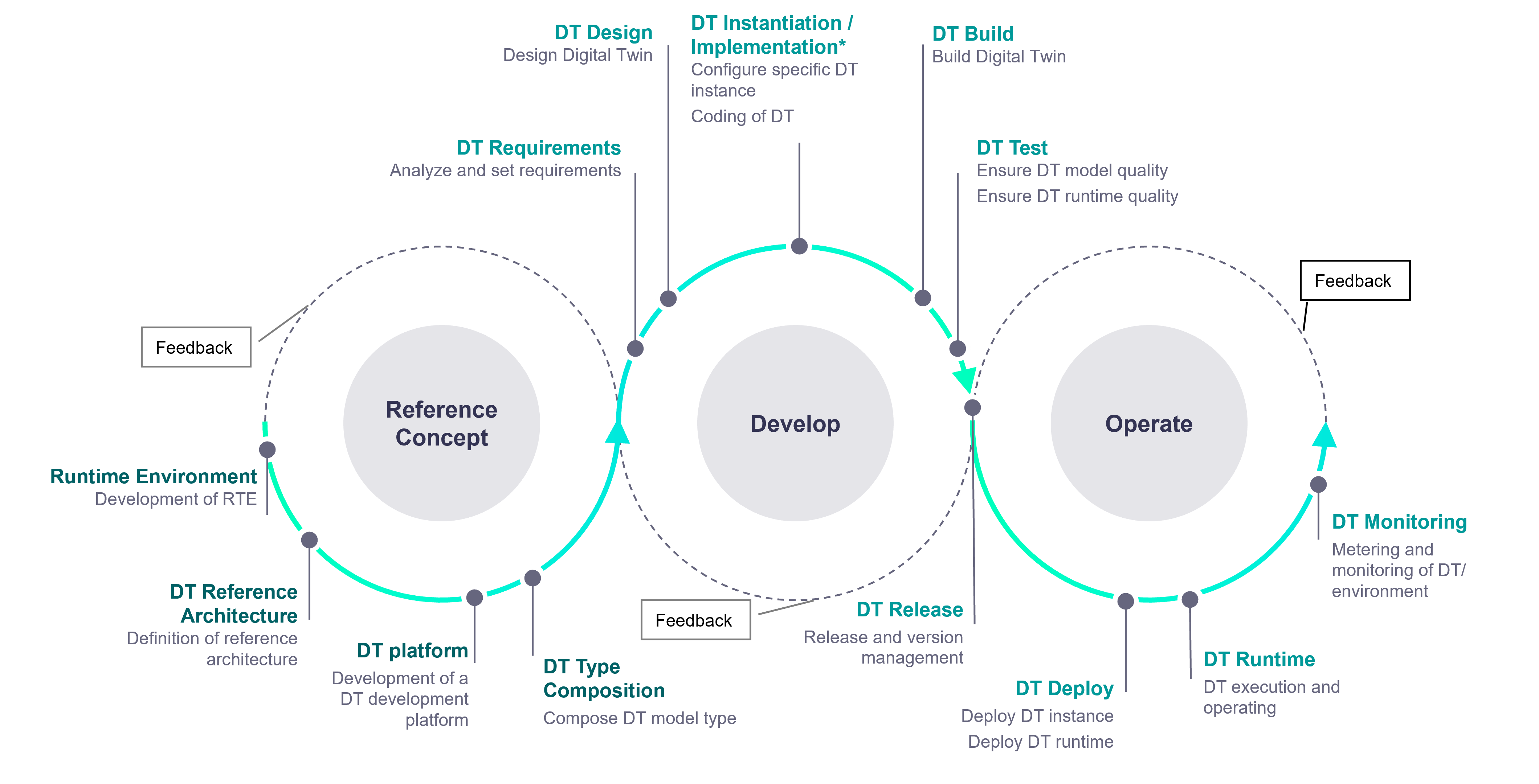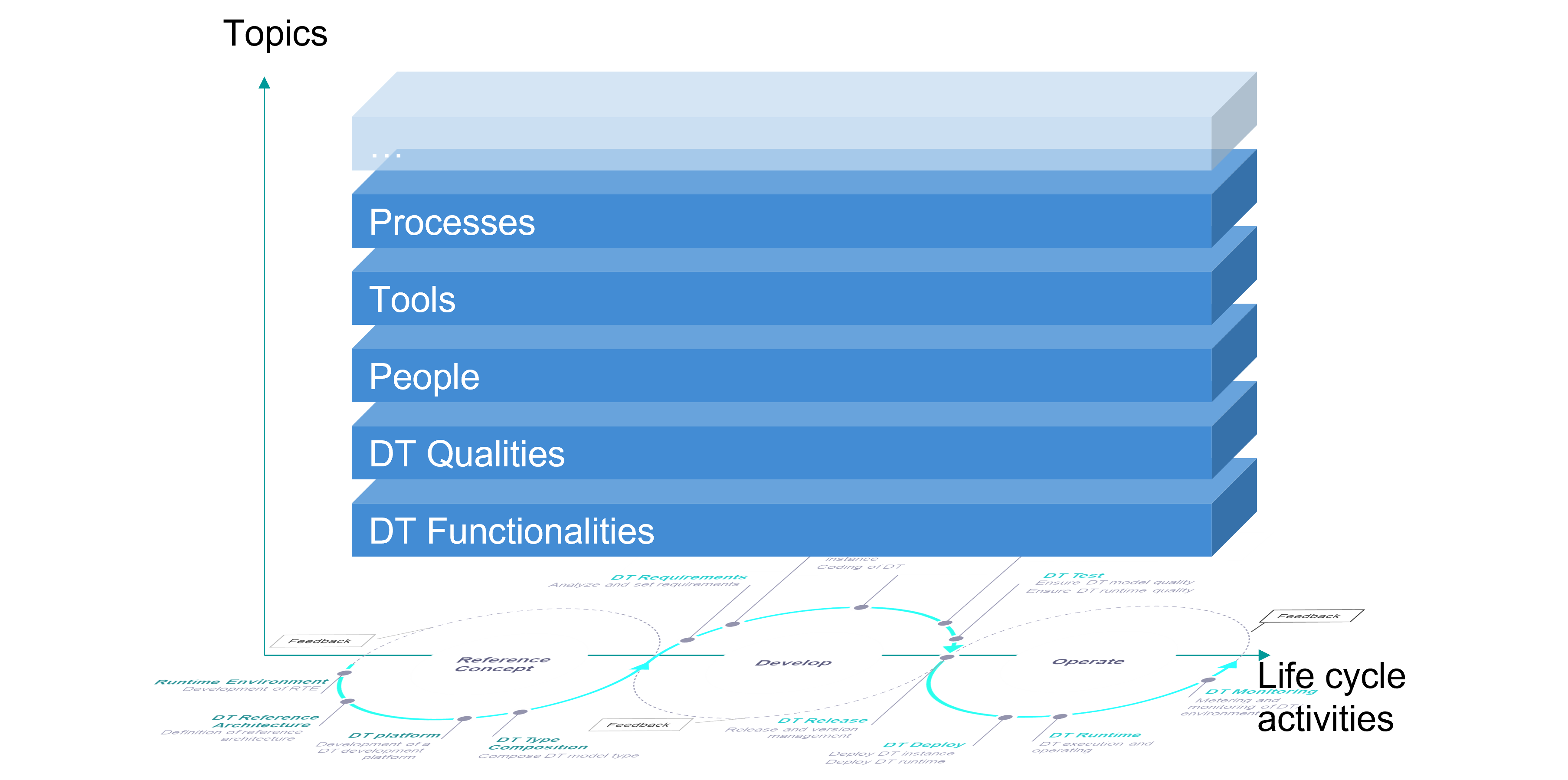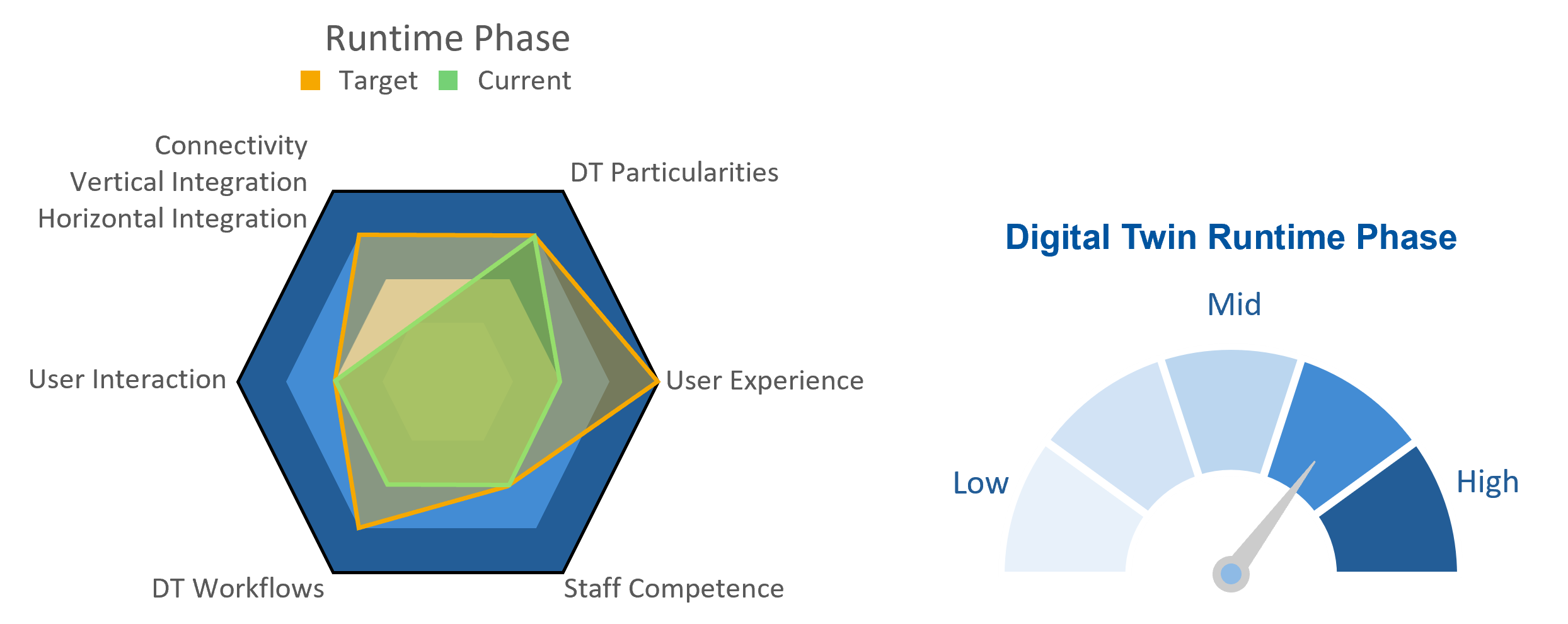Digital Twin Maturity Model
White Paper by Malte Heithoff, Judith Michael, Bernhard Rumpe, Software Engineering, RWTH Aachen, August 2024
In Digital Twin Definition we discussed already what a Digital Twin is and in Digital Twins we talked about the topics our research [DMR+20], [BMR+22], and [BBD+21b] addresses so far.
Here we talk about industrial implications, including methods to understand and manage the purposes and thus functions a digital twin must accomplish to be useful. We also talk about the challenges of introducing digital twins in a company itself.
Definition: Digital Twin Maturity Model
Digital twin maturity enables measuring an organization or one of its units in terms of their maturity regarding DT-related practices along the DT’s whole lifecycle. Maturity is defined as the current state on a maturation path concerning a specific discipline and the organization’s goals.
Rationale for this Definition of a Digital Twin Maturity Model
The digital twin maturity model considers a wide range of disciplines, including technical and non-technical aspects (e.g., business, competencies, processes) during the whole life cycle of the DT. For those, it defines relevant characteristics, benefits, and challenges for each maturity level.
The higher the maturity, the better. This is noticeable in various areas:
- The development speed of digital twins increases.
- Software quality meets the standard of the organization
- Errors and failures occur less likely
A low state in a discipline can still meet the organization’s goals and result in a high maturity. The maturity model creates transparency about the organization’s current as-is position, its goal, and how to proceed.
Digital Twin Maturity Model Implementation
Together with Siemens AG, we developed a 2-dimensional Digital Twin Maturity Model (DTMM) that organizes digital twin maturity across:
- 3 Digital Twin lifecycle phases, which group
- 13 Digital Twin lifecycle activities, covering
- 43 Digital Twin topics that are categorized into various cross-cutting areas.
This allows for a maturity model that covers the whole digital twin life cycle and also allows for prioritizing / focusing specific activities based on the preferences and goals of an organizational unit creating and maintaining digital twins.

The three main lifecycle phases are the DT Reference Concept, the DT Develop, and the DT Operate phase.
- DT Develop: This phase covers the analysis and definition of requirements, the design of the DT, the configuration and coding of the DT, building the DT, ensuring the DT models and runtime qualities, and releasing the DT.
- DT Operate: This phase covers deploying the DT instance and runtime, the execution and operation of the DT as well as the monitoring of the DT and its environment.
- DT Reference Concept: This phase covers developing the runtime environment, a DT reference architecture, a DT development platform, and the composition of DT model types. Including a Reference Concept phase in a DT lifecycle and systematic reuse increases the maturity of an organizational unit.
Each of these phases has a feedback loop to improve aspects in other phases, e.g., from operation back to the development phase or the reference architecture phase.

Cross-cutting areas lie across all life cycle phases and can be discussed in each life cycle activity. Examples of such cross-cutting areas are, e.g., processes, tools, reporting, security, people, and quality assurance. To handle cross-cutting topics, it helps to have team members who supervise specific topics across the DT life-cycle to ensure consistency. In addition, some cross-cutting aspects need to be managed over all areas and phases.

The DTMM comes along with an accompanying application for self-assessment of organizations and organizational units. It includes explanatory questions to ask themselves for each topic as well as low-level and hight-level examples. One evaluates these questions always against own goals and requirements. Based on the results, one selects a level for the current state and a level for the desired state, from not implemented to started implementing, partly, mostly, and fully implemented. The self-assessment provides a comparison between current and target state. After this self-evaluation, organizations and organizational units aim to work out a roadmap to achieve the desired maturity level. As this is highly individual, the DTMM questions for each can be used as guiding hints.
Companies using a Digital Twin
When applying the DT maturity model, one of the core elements is to understand the requirements and the desired purpose of the DT, such that the appropriate solution can be created. These requirements may be very different, as the following examples show. In Digital Twin Definition we already discussed the diversity of possible digital twins.
Digital Twin for Products
If the digital twin is mainly for a physical product that is being produced and then shipped to a customer, then the company may ship the digital twin and not bother with its operation.
However, the company may keep the contact with the ship product to understand the way it operates and optimize for the future. Even more interesting, in case of failure, having detailed monitoring of the product, for example, an aircraft turbine, helps a lot to settle recourse claims early. This will change the way claims are raised and settled, but also how safety and IT security will be improved in the future.
Using a Digital Twin to Understand and Transform a Company
It seems that some companies, including NASA, combine the possibility of introducing digital twins for their own factories, but also for their own workforce (!) to run a digital transformation of their business processes.
In this case, a digital twin is a vehicle to (1) understand an existing business, and then (2) understand the desired new form of business, before (3) doing the transformation process, which is typically subsumed as digital transformation and understood as an ongoing long-lasting process.
A digital twin of certain parts of the company is then basically a software solution that assists the company’s development and business processes.
As usual when introducing new software: The processes have to be adapted, may be simplified, partially automated, and restructured. Otherwise, the new software is of no use. Software always changes the processes. Therefore, designing the appropriate software always has to start with understanding the desired and the current processes. This is why digital transformation is a challenge.
There seems to be an underlying assumption, that in many company processes, we’ll be assisted or accompanied by digital twins, which subsumes that the digital twin is basically an improved form of the already existing information systems with a better integration on the higher degree of automation.
We would also like to mention that a certain form of digital twins may allow analysis of what-if scenarios, e.g., when restructuring processes or even organizations, quite like BPMN-based analysis tools do today. This is because digital twins rarely are introduced when building a fresh company (“greenfield”). Instead, normally a brownfield situation prevails, and thus introducing a digital twin system of a company or a digital twin-based change of the business is an organizational challenge.
Related publications:
-
[BMR+22]In: Journal of Computer Languages (COLA), Volume 70, Art. 101121, DOI 10.1016/j.cola.2022.101121, Elsevier, Jun. 2022.
-
[BBD+21b]In: Conceptual Modeling, ER 2021, A. Ghose, J. Horkoff, V. E. Silva Souza, J. Parsons, J. Evermann (Eds.), pp. 271-281, Springer, Oct. 2021.
-
[DMR+20]In: Conceptual Modeling, G. Dobbie, U. Frank, G. Kappel, S. W. Liddle, H. C. Mayr (Eds.), pp. 377-387, Springer International Publishing, Oct. 2020.